Today I’m delighted to share my interview with the founder and artistic director of a marvellous touring puppet theatre company: Rob Ashman of Sea Legs Puppets. I can personally vouch for the brilliance of the Sea Legs shows, as I’ve seen three of them! I’ve also seen many other puppet theatre shows, brought to my area by the fantastic Birdhouse Theatre, and though they were all super, I can honestly say that Sea Legs was by far my favourite, due to the quality of the narrative and the ingenious sets and puppets themselves. There is a lovely old-fashioned and traditional quality to the shows, yet the stories are brought right up-to-date with many modern references. The children of all ages in the audience are rapt and Poppy has loved all these shows too. Here’s what Rob had to say:
INTERVIEW WITH Rob Ashman of SEALEGS PUPPETS
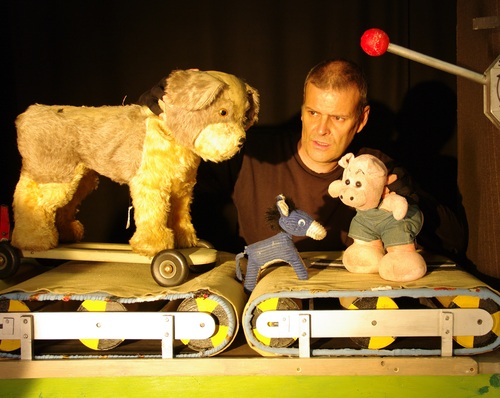
[1] How did you become a travelling puppeteer?
As a child I knew I wanted to be a performer, though I don’t think it had ever occurred to me to be a puppeteer. It was only many years later however, in my late 20’s, that I trained in performing arts. Not long after I left college, in 1995 a friend asked me if I wanted to create some puppet theatre with him. With Lottery Funding we set up Sky in the Pie Puppet Theatre Company. Our first production was Hans Christian Anderson’s The Emperor and the Nightingale which, for 18 months, we toured to schools and arts centres. The company folded after its second production, when the van containing the puppet theatre was stolen.
In 2001, having worked as a freelance performer for a couple of years, I set up Sea Legs Puppet Theatre. I realised that puppetry was a perfect vehicle for me as an individual artist – as well as being fairly able at making puppets and sets etc I am also a musician, actor and songwriter. Puppetry is a wonderfully diverse artform and within it, one can realise whatever the imagination dreams up. So with help from Sea Legs’ team of artists, I get to choose the stories we produce, design the sets, make the puppets, write the songs all the way through to performing the shows up and down the country each week. It is hard work, but nothing can beat the feeling of standing on stage performing these wonderful stories.
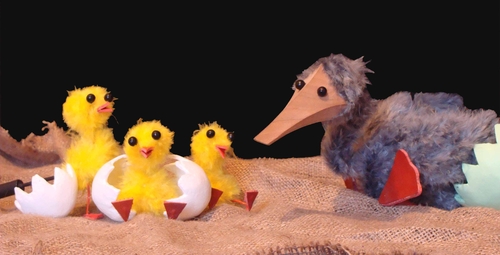
[2] How do you choose which stories to turn into shows and why those particular ones?
It takes me a very long time to settle on a story I want to produce. I know that once I am committed to creating a new show, I will have to live with that story for sometimes many years to come. I simply have to love the story. Usually a story has to resonate with me. It has to say something I can relate to. Something I believe in. I generally choose fairy tales – I love the fact that an awful lot of them are ancient, having been passed down orally for centuries before they were ever written down. The stories I love the most have a central character that goes through some kind of transformation. The Ugly Duckling and The Selfish Giant are perfect examples. I didn’t actually know the story of The Selfish Giant before I read it whilst preparing for a new production in 2007, but on that first reading it jumped out at me from the book. I pretty much knew straight away that, that was my next production.
Stories also speak to me for where I am in my life at a particular point. One thing I have always wanted to do is to have my own band playing my own songs. I don’t think it is coincidence that at the time I was producing Sea Leg’s latest production The Musicians of Bremen, I was also putting a band together. It actually to some extent mirrors the story of The Musicians of Bremen. No, we may not be on the scrap heap, but we are all getting older. I have just turned 50 and I want to sing my songs and that’s what I’m finally doing. The strange thing is; I only saw the similarity between the story and what was happening in my own life after the production came out – it was a wonderful moment.
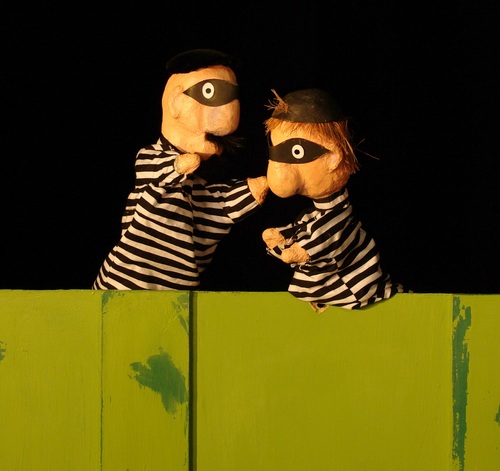
[3] When you have chosen a story, can you explain the process by which you transform the basic plot into a puppet show; in particular, the changes you choose to make to the original?
I generally stay fairly faithful to the original plot but will sometimes adapt the ideas to make them more contemporary, relevant or simply interesting to myself and the audience. To use The Musicians of Bremen as an example: I had been looking at producing The Velveteen Rabbit for quite a while and for various reasons decided not to. However, when it came to producing The Musicians of Bremen the idea of a toy becoming real seemed to be stuck in my Psyche. I have for many years enjoyed watching my own children “bring their toys to life” and it really it was an extension of that too. Once I had that idea it was a question of “okay, how do we choose to present this?”. The next step then, is the set and puppet design. I often find this part of the process quite frustrating because there isn’t a lot that can be done until it is resolved. Once we had the idea of the story beginning in a toy recycling factory, we quickly went on to conveyor belts becoming a moving backdrop for the journey to Bremen. Then we could begin the making process. Also from that point on, I begin scripting and getting ideas for where we want songs and music etc.
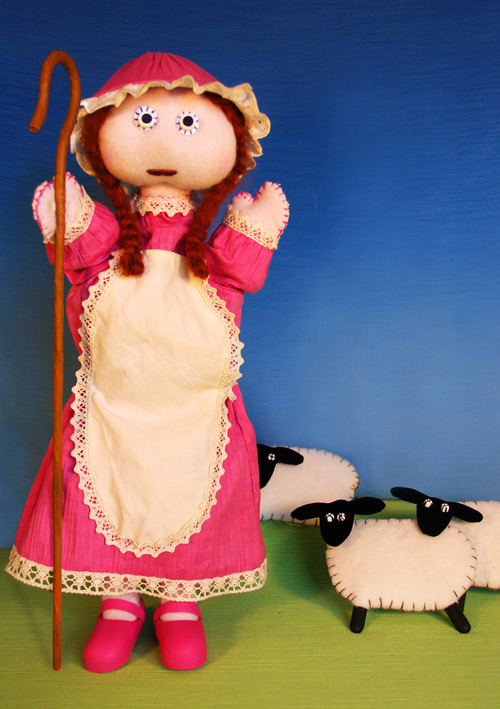
[4] Can you talk us through some of the technical challenges of producing one of your puppet shows? For example, the lighting, music, prop and scenery production?
The biggest challenge for any Sea Legs production is, how can I perform and tour this show on my own? Performing and touring the production go hand in hand, as it is usually not financially viable to take a technician out on the road with me. So the set, props, lighting, sound – everything has to be created in such a way that I can load the van, unload the van, carry all the equipment and set it all up and perform it on my own. Not just that, but I must be able to get in to a venue and set everything up within 2 hours and then get everything down and out again in 1 hour. That is the format that works with most venues that I go to; schools, theatres etc.
We do all we can to make it as fool proof as possible. Every step of the way, there are decisions that have a direct effect on how slick the eventual production will be.
I run the sound on a cd player – I have grown adept at pressing play, pause, changing the volume or moving the cd on to the next track all whilst operating a puppet and singing, narrating or speaking the part of a character. Lighting wise, with some shows I keep it very simple – choosing one warm lighting state. With The Musicians of Bremen I use 4 fresnels [theatre lights]: 2 either side and an overhead projector for the shadow puppets. All of the lighting states are programmed into a lighting board which I can operate directly from or by the use of a switch that is placed beneath the playboard.
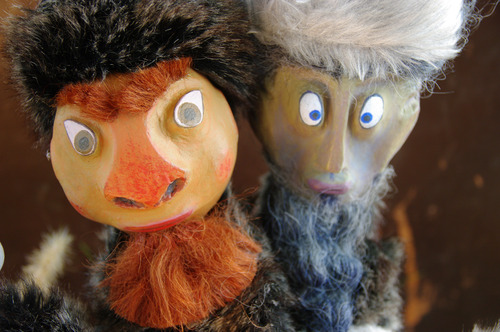
[5] Even though you perform alone, I understand you work with a team to develop your shows. Can you explain a little about the different jobs and people involved in a Sealegs production?
Most productions involve around 15 – 20 makers, designers, musicians etc. However there is generally a core team of 3 or 4 people. I am the Artistic Director and oversee and okay every decision. I also have a big hand in making the puppets, set, props etc as well as writing any songs we need. Then there is Matt Hart. Matt got me into puppetry in the first place – we founded Sky in the Pie Puppet Theatre together back in 1995. He has great artistic vision and is a brilliant maker and designer. With the last production we also brought in technician Paul Batten to design the lighting and as another maker. When the show is ready to rehearse I bring in a drama director – I have worked with Johnny Cartwright for many years and he has directed most Sea Legs productions. He is also there along the way, through the making process as we discuss ideas etc.
As well as the core team there are always people that are brought in for, perhaps one or two jobs: painting or sewing, blacksmithing etc. I also bring in numerous musicians as and when required.
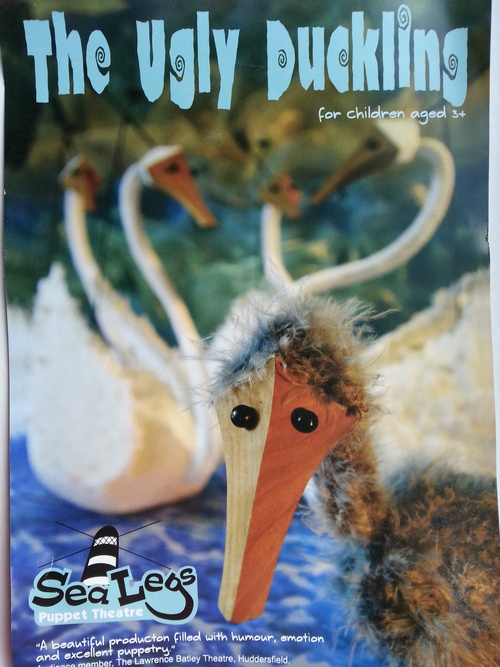
[6] What were your influences as a child in terms of reading, stories and perhaps film or theatre? And what are your influences now?
The first book I remember reading that I just could not put down was Charlie and the Chocolate Factory by Roald Dahl. I completely entered Charlie’s world and so wanted him to find the golden ticket. I was totally hooked on the fantasy of it all. It’s easy as an adult to forget the power of the imagination. The willingness to enter that fantasy world is so strong in a child and it can and so often does diminish as we get older. As a child I also loved Laurel and Hardy and Charlie Chaplin.
For me now when I go and watch another puppet theatre, I am influenced by most that I see. There is almost always something in a show that inspires me – a part of the set, the skill of the puppet manipulation, the music used etc. Actually though my biggest influence now is my 8 year old daughter. It is one of the most wonderful things about having children – they put one back in touch with one’s own inner child. She fires my imagination and helps me see a child’s perspective.
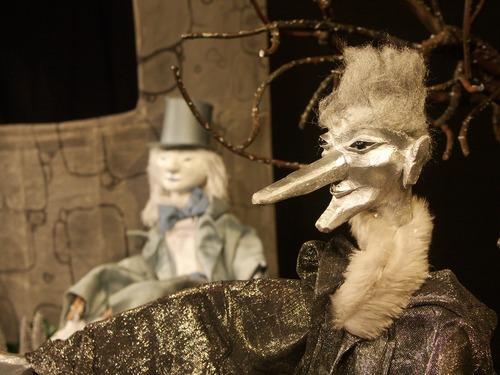
[7] What are your plans for your next show, if you don’t mind sharing these?
At the moment I am not thinking of my next production. I have 4 or 5 productions on the go and they will sustain me for a while. I’m sure at some point, I will get the urge to produce some new theatre, but The Musicians of Bremen took an awful lot of energy and was financially very costly. For the moment then, I’m taking a breather from it.
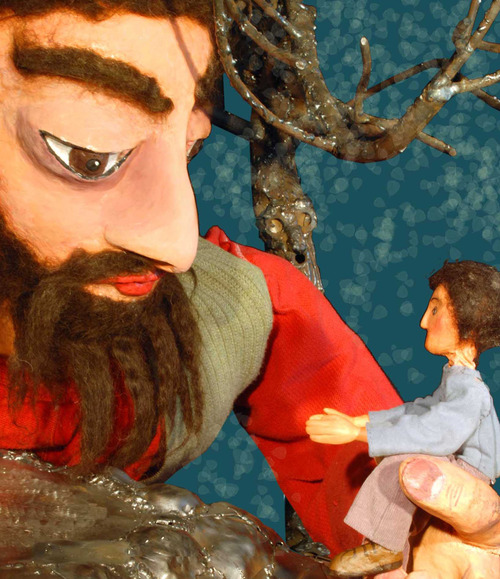
And here is a question from Poppy:
[8] Do you practise doing all the different voices for the different characters?
Yes. Once I have settled on a particular voice for a character, I will practise the actual words they say. Some voices come easier than others and certain voices will crop up in different shows. I was born in Wales and will often have a Welsh character, for instance. Often there will be one or two tricky characters – with The Musicians of Bremen it took a long time to settle on the voices for Little Blue and Colonel Cockerel. Colonel Cockerel had a southern American drawl for a while, though not a very convincing one. I struggle with American accents and after trying lots of different voices went for a posh English officer type of voice which suited the character.
It often takes some time to get a perspective on a character. Little Blue originally had a squeaky kind of voice – I recorded the show on video and found his voice quite irritating. It took a while but eventually I tried a southern Irish accent and that stuck. It was a difficult one. It’s not an accent that comes easily to me but what I tend to do is listen to people with the same accent and go through every word I have to say. There are different vowel sounds etc to learn. Once you have those, the accent settles into place after a while of doing it. Often however, I can only actually say particular phrases in a certain accent as that is what I’ve learnt.
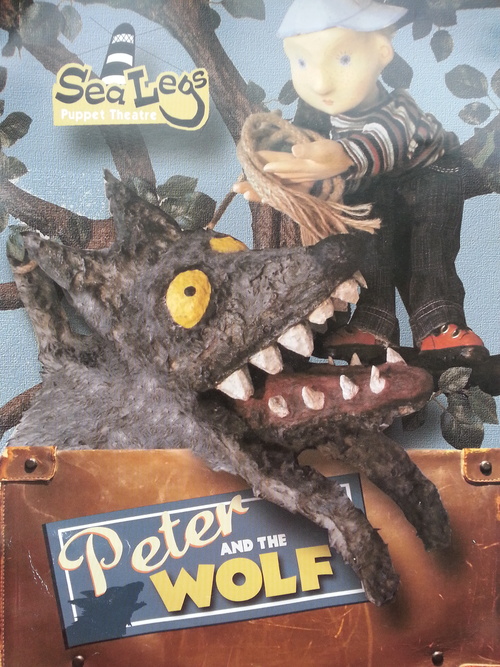
And two questions from Simon:
[9] Who are the best puppeteers you have seen?
Ronnie Burkett, the Canadian puppeteer stands out in my memory. I went to see him perform his show 10 Days on Earth, a few years back and found it absolutely compelling. I watched it in a not very comfortable theatre and, if I remember correctly the show was about 2 hours long. When I sat down, I thought “these seats aren’t very comfortable.” As soon as he appeared on stage, I didn’t think about the seats again until the end of the play. His supreme manipulation skills along with his totally convincing voices, the set and music and songs (all written by him) were pretty hard to beat. Watching him certainly lifted the bar for me. “Wow!” I thought – “I could be doing this forever more and still find ways of improving my skills.”
Others I have found inspiring are: Handspring Puppet Theatre – the creators of the famous War Horse puppets – stunning! Drew Colby of Finger n’ Thumb – does fabulous hand shadows. Green Ginger’s production of Rust had some wonderful puppetry. Last year at Skipton Puppet Festival I was lucky enough to see German puppeteer Anne Klinge and thought she was pretty amazing. She does “foot puppetry” – literally turning her feet into puppets – I find anything like this utterly compelling because done well, it tricks one’s mind into believing the unbelievable. We know the puppets aren’t really real! It’s an illusion created by the puppeteer’s skill and our own willingness to suspend our disbelief. However, done well; we can laugh, cry, get angry – feel any emotion and believe any character. That is the wonder of theatre and in particular the wonder of puppetry.
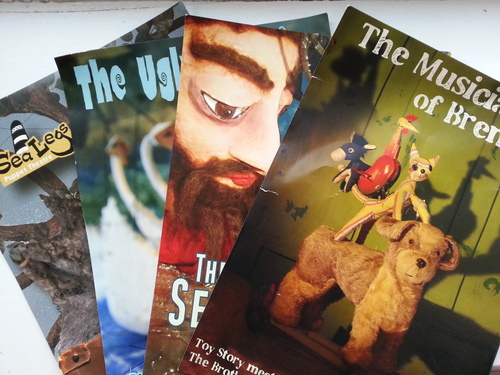
[10] What do you find are the similarities and differences between British puppet shows and those from other countries?
This one is really difficult – I am struggling with this question – I actually don’t feel qualified to answer it. What I have found is that we all learn from each other. We all take ideas from each other and make them our own. Puppeteers tend to want to share ideas – it can only help all of us develop our skills and have a better understanding of the art form.
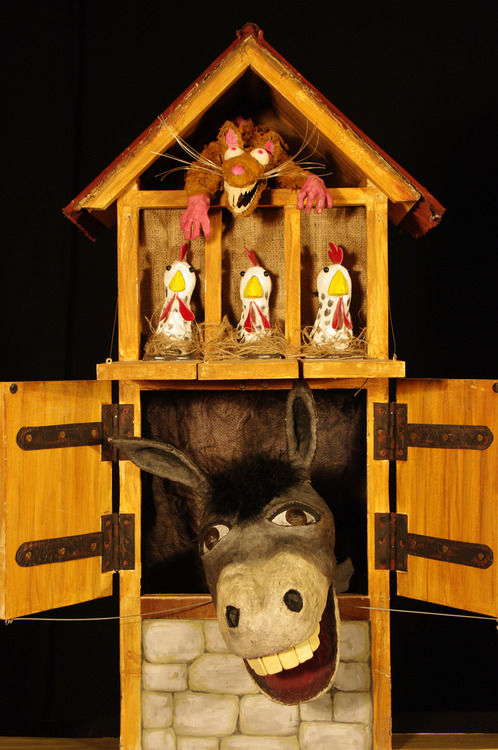
Thanks so much to Rob for his fascinating answers.
You can find details of SEA LEGS PUPPETS on their website here:
http://www.sealegspuppets.com/
and you can also find them on Twitter @Sealegspuppets.
The wonderful Birdhouse Theatre – which brings quality children’s theatre shows to North East Lincolnshire – can also be found on Twitter @BirdhouseT and here’s their website:
http://www.birdhousetheatre.co.uk/
Here is the link to see the upcoming dates of SEA LEGS PUPPETS shows – go along and enjoy!